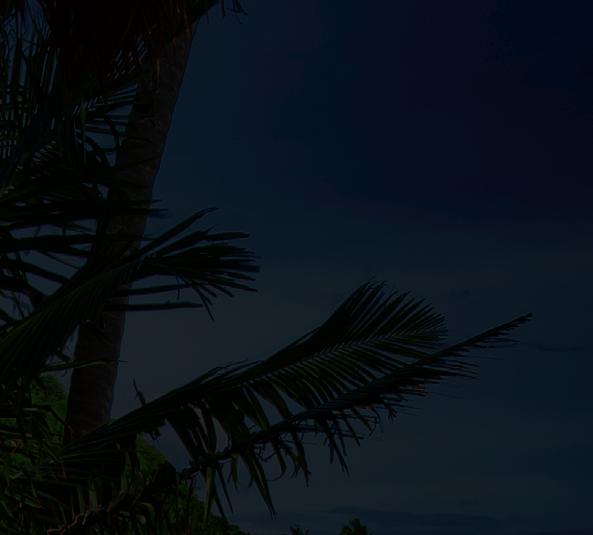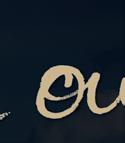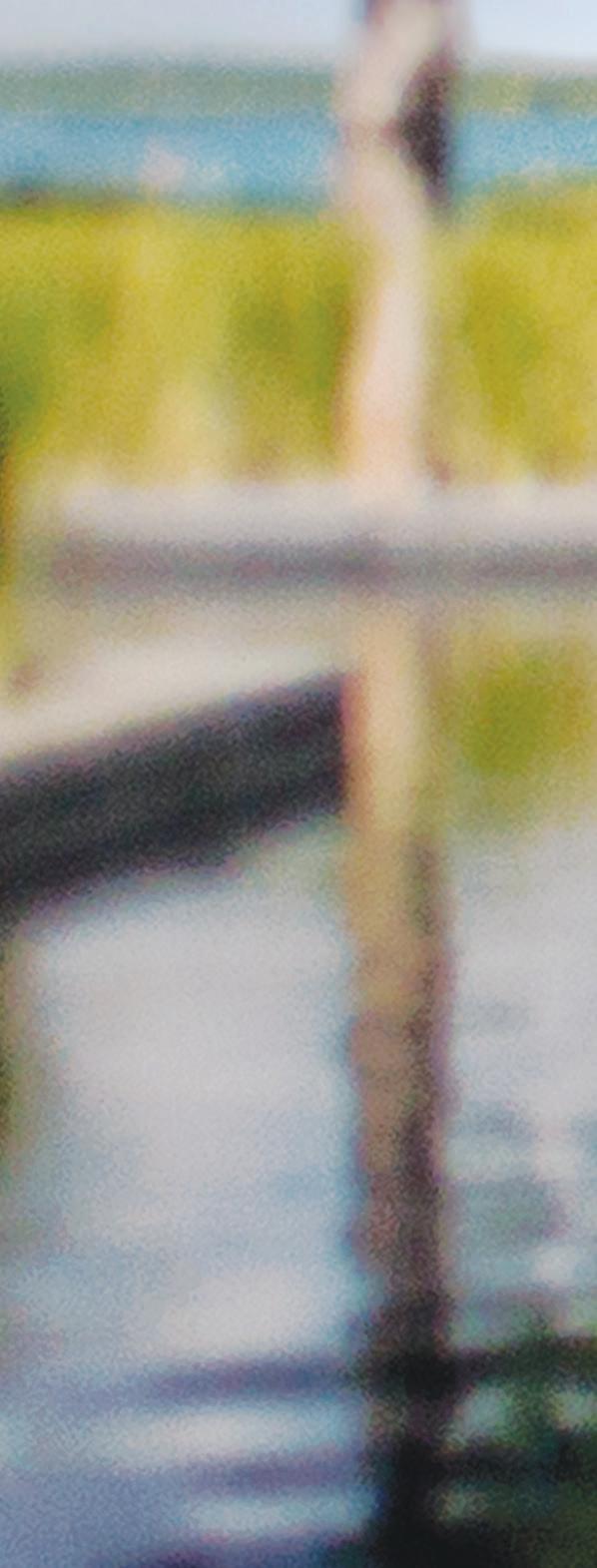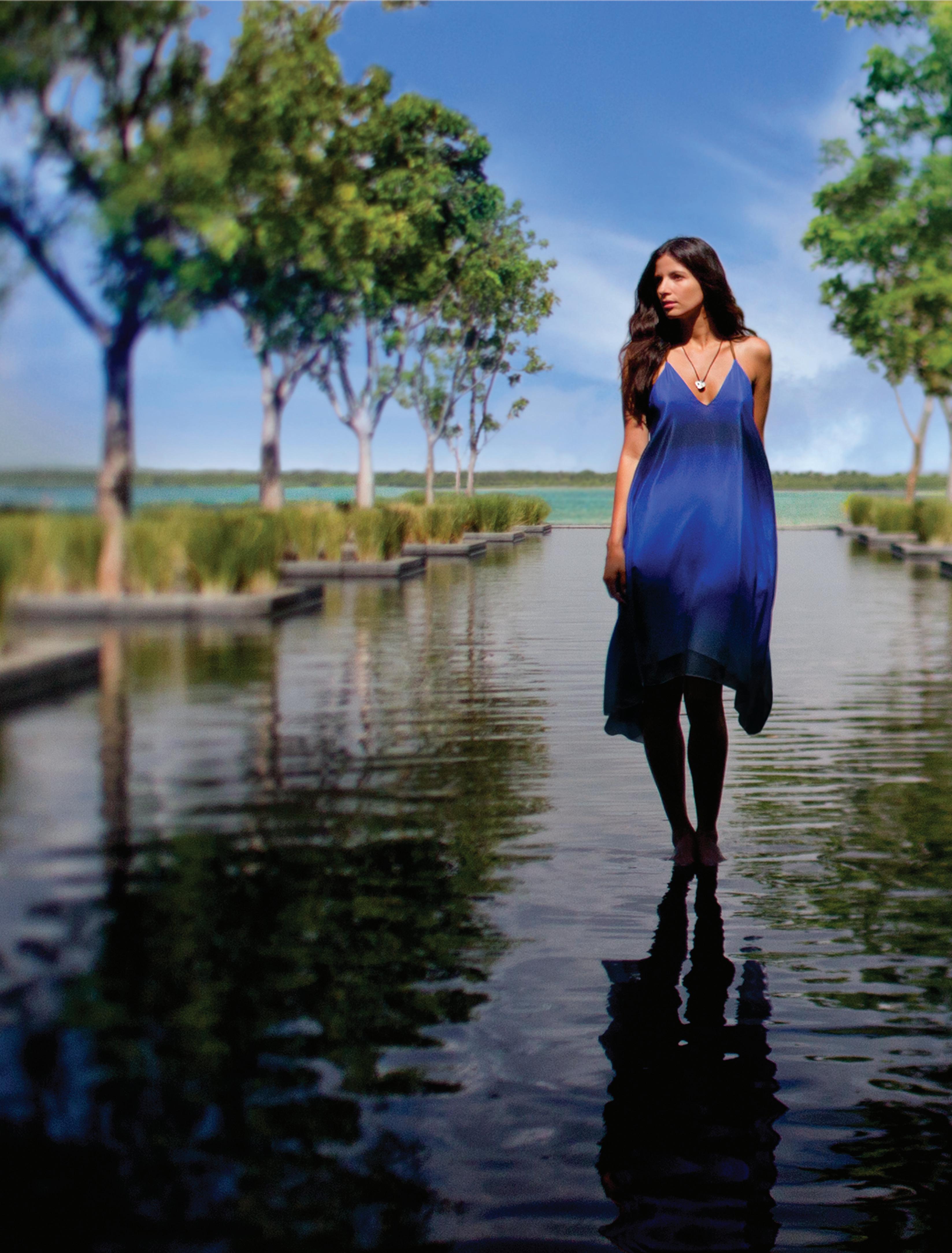MARTHA’S VINEYARD

ENTERTAINMENT
RAHEEM
TRAVEL
BARCELONA






The Legacy Builder

MARTHA’S VINEYARD

ENTERTAINMENT
RAHEEM
TRAVEL
BARCELONA






The Legacy Builder
Raheem DeVaughn
Tamika Mallory
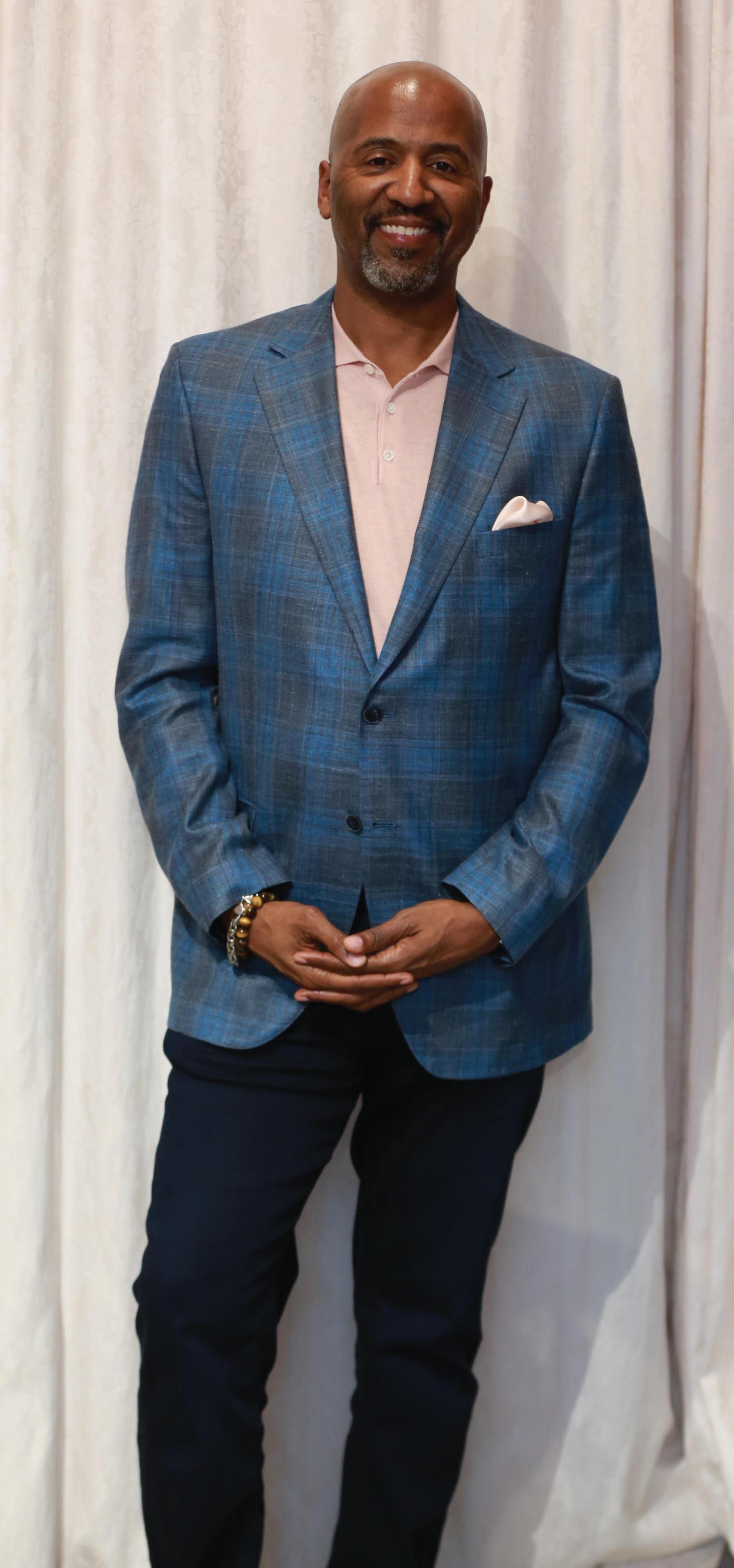
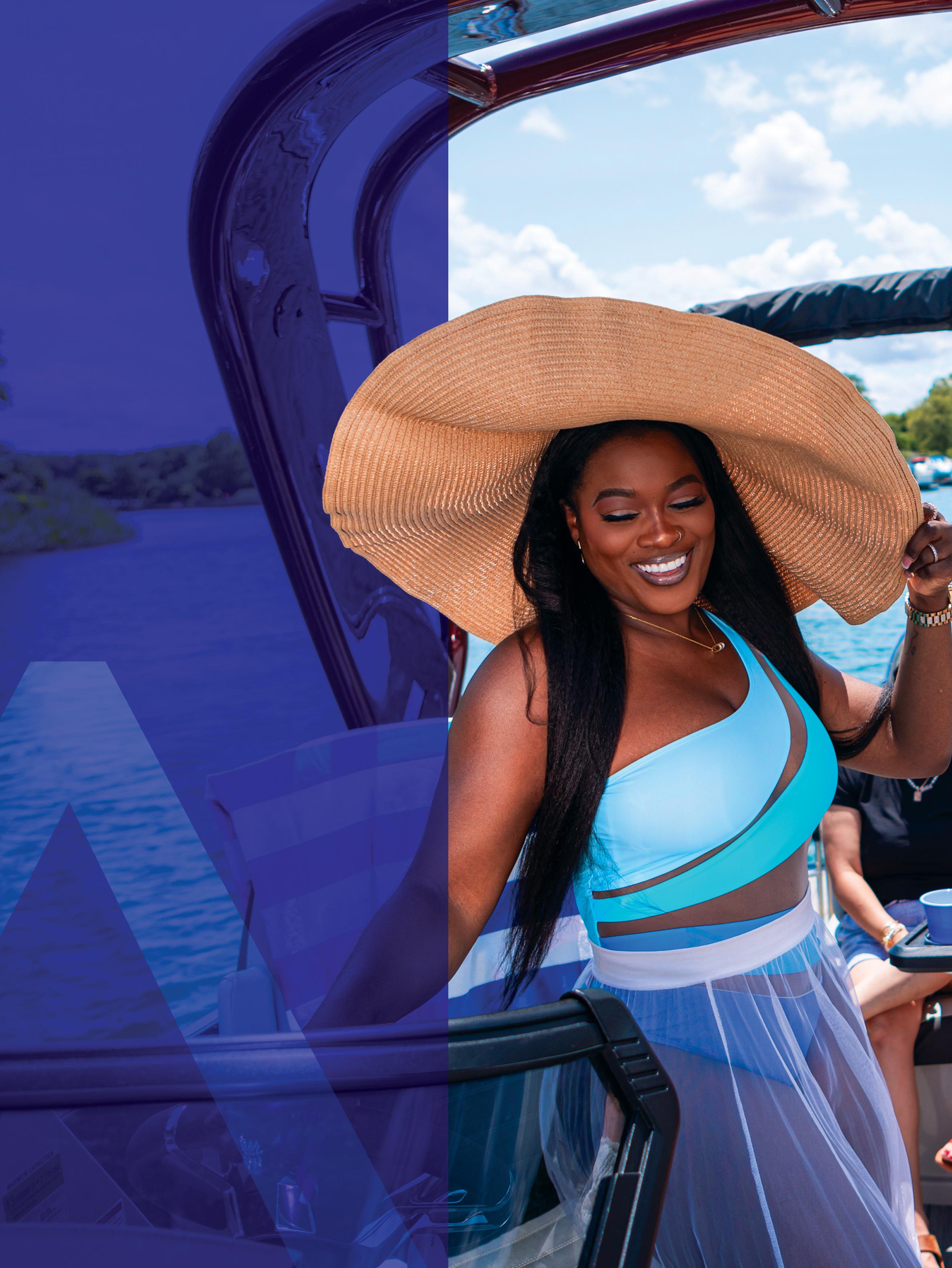

CO-CEO | EDITOR IN CHIEF BRETT WRIGHT EDITOR
BRYNA JEAN-MARIE
CONTRIBUTING CREATIVE DIRECTOR
DARRYL L. BROWN
DIGITAL CONTENT DIRECTOR
ANNIKA HARRIS
DIRECTOR OF SOCIAL MEDIA
ANGELA B. GALLY
CONTRIBUTING EDITORS PATRICK COOPER
COPY EDITOR AMY LONG
CONTRIBUTORS
BAGEOT DIA, JASON GORDON, ANNIKA HARRIS, ANITA KOPACZ, DR. CRYSTAL MOORE, BIANCA MORENO, SHERYL NANCE-NASH, NEKKA SAMUEL, CHINWE UGOEZI, KHALIL WALDRON, YVONNA WRIGHT
UPTOWN MAGAZINE PO BOX 624 PALISADES, NY 10964
T: 646.308.1425 F: 646.957.9220 UPTOWNMAGAZINE.COM
FOR CUSTOMER SERVICE WITHIN THE U.S., CALL 800.723.3984. OUTSIDE THE U.S., CALL 818.487.2059.
CO-CEO | CHIEF REVENUE OFFICER LEONARD E. BURNETT JR.
SENIOR ACCOUNT DIRECTOR ROBIN GIBSON
NORTHEAST SALES MANAGER LOUREN BATES
EAST COAST SALES JASON DEMARCO
MARKETING & EVENTS DIRECTOR TRIENA CRUMMIE
VP ENTERTAINMENT PETER THOMAS
EXECUTIVE ASSISTANT TO CO-CEO’S ALECIA WARD
DIGITAL MEDIA DIRECTOR STEPHENETTA (ISIS) HARMON
AD OPERATIONS SPECIALIST ISAAC CHILDS
CONSUMER CIRCULATION MANAGER BERNADETTE PACE, PROCIRC
LEONARD E.
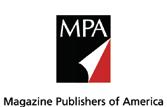
By asking deeper questions, we’ll help find your financial blind spots, and your opportunities, to help you do even better now, and years from now. That’s a better way to money.
It’s easy to get started—no commitment, just a better conversation.
See the difference the right advisor makes.


ANTONIO & ALETHEA HUNTER
LES HAYLING
KEVIN WILLIAMS
LLORYN LOVE-CARTER
DALE BARNETT
NIKKA MCCLAIN
ROB JOHNSON
AMOS AAROW
THERESA BUCKSON
BAR NOIR
DALE FAVORS
WES & DAWN MOORE
VICTORIA LAMBERT
ERIN GOLDSON
SHERYL WESSLEY
LAKECIA GUNTER
PATRICK COHEN
PHIL & ROBIN ISOM
MO’S SANDWICHES
ANDREA TURNER
DERRIN & DAWN WOODSHOUSE
FLOYD & STEPHANIE RANCE
SHANA HOOKS
ANIKA HOWARD
DORRIA BALL
TAMIKA MALLORY
ANTHONY GRIFFEN
ANNIKA HARRIS
JOSEPH ANTHONY
LERON ROGERS
WENDELL HASKINS
ANA HOFFMAN
DEBORAH SANTOS
YVONNA KOPAZ
RON & SHELLY GILLYARD
SIDRA
TRACY WILSON MOURNING
NICOLE SEBREE-HENRY
SHEILA MARMON
STEVE CAPERS
DERRICK HEGGANS
SIMONE WHITE
MODUPE ROUSE
GARLIN GILCREST
KARLA RADFORD
WENDY CREEDLE
FONZWORTH BENTLEY
ANNITA KOPAZ
SCOTT & DEBBIE GUTTERSON
THE PA CLUB
HARRY HALL
ROBIN NASH
DR. LEE GAUSE
JAMES E. FRANCIS
BRANDON SCOTT
MARLON GREER
SEAN ARMSTRONG
STEVE PAMON
TARIK BROOKS

BY NORTHWESTERN MUTUAL
A sudden influx of money is a great problem to have. When you earn a bonus, receive an inheritance or make a sale, your cash flow will look a little different—in a great way. And odds are, your wheels are already spinning on what to do with it.
Perhaps you’re thinking about paying off debt. Maybe there’s a large purchase you’ve been looking forward to. Or maybe you’re turning back your retirement clock.
Though there’s no “wrong” way to spend your financial windfall—there are more efficient ways to use it. Ways that will help your money work harder for you. This is where your financial professional can help.
Your financial professional can get to know what you value and help you develop a comprehensive plan that helps you live those values—from providing for your family to making an impact.
The right financial professional can also help identify blind spots and opportunities to help grow and protect
your money, showing you how to creatively use tools like disability or permanent life insurance to help you reach your financial potential. They’ll recommend solutions uniquely tailored to you that get the most out of your money and put it where it matters.
And even if you already have a plan, your financial professional can help you find new opportunities to maximize what you’re doing right.
You’ve worked hard to get where you are, and it’s important to have the right team behind you. Connect with a financial professional today to find a better way to money.
This article is part of a paid program. Northwestern Mutual is the marketing name for The Northwestern Mutual Life Insurance Company (NM) (life and disability insurance, annuities, and life insurance with long-term care benefits) and its subsidiaries in Milwaukee, WI.
BY TODD CARTER
You know that feeling when you’re heading to the Vineyard for the week. The car is packed, playlist is queued up, and you’re cruising down the highway with nothing but good vibes ahead? That’s exactly the kind of energy the 2025 Nissan Rogue brings.
This isn’t your average midsize crossover. It’s the plusone that shows up ready for every part of your lifestyle. Whether you’re pulling up to a poolside soirée, grabbing oysters in Edgartown, or taking a detour down a treelined dirt road just for the view, the Rogue keeps the experience smooth, stylish, and elevated.
From the jump, the Rogue turns heads. The updated grille and sleek lines give it a bold-but-not-too-flashy look. Like someone who knows luxury but doesn’t need to name-drop it. Our test model, in a rich two-tone colorway with black roof and wheels, looked equally at home valet-parked at a beachside dinner or parked at the farmers market.
Step inside and it’s a whole other level. Nissan’s got this “Zero Gravity” seating technology that we honestly thought was marketing fluff until we did the drive from
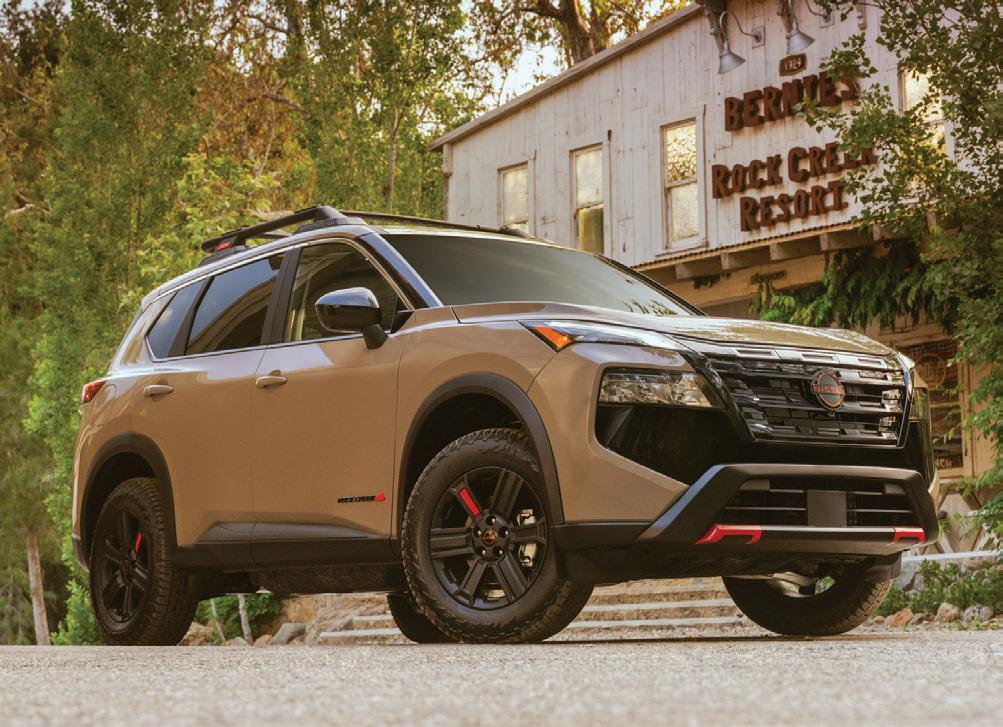
Boston to Martha’s Vineyard and didn’t once complain about our backs. Leather-wrapped touches, an optional panoramic moonroof, and real attention to detail make it feel way more premium than the price tag suggests.
The Rogue doesn’t just look smart, it is smart. The Platinum trim comes with Google built-in, meaning you can ask for directions to that tucked-away wine bar or blast your favorite Afrobeats playlist with a simple “Hey Google.” Wireless Apple CarPlay and Android Auto come standard in most trims, and the digital display is crisp and easy to use even if you’re the designated DJ.
Now let’s talk drive. The Rogue is quick enough to zip through weekend traffic, smooth enough to glide over bumpy side roads, and just tall enough to give you that “queen of the road” confidence. And if you’re heading to one of those secret beach spots that aren’t exactly on the map? The Rock Creek edition has just enough ruggedness to handle it with all-terrain tires and a little extra lift.
With mileage in the low 30s mpg and eco-conscious design touches throughout, the Rogue lets you feel good about your drive, especially when you’re headed to an empowering panel at UPTOWN House or cruising over to the closing night party.
If you’re the kind of person who loves luxury but still values practicality, who wants a car that can do school drop-off and pull up in style to a vineyard soirée. The 2025 Nissan Rogue might just be your next move. It’s comfort without compromise. Style without stress. And with Nissan supporting this year’s U PTOWN Vineyard experience, it just makes sense to roll with a brand that rides for our community.

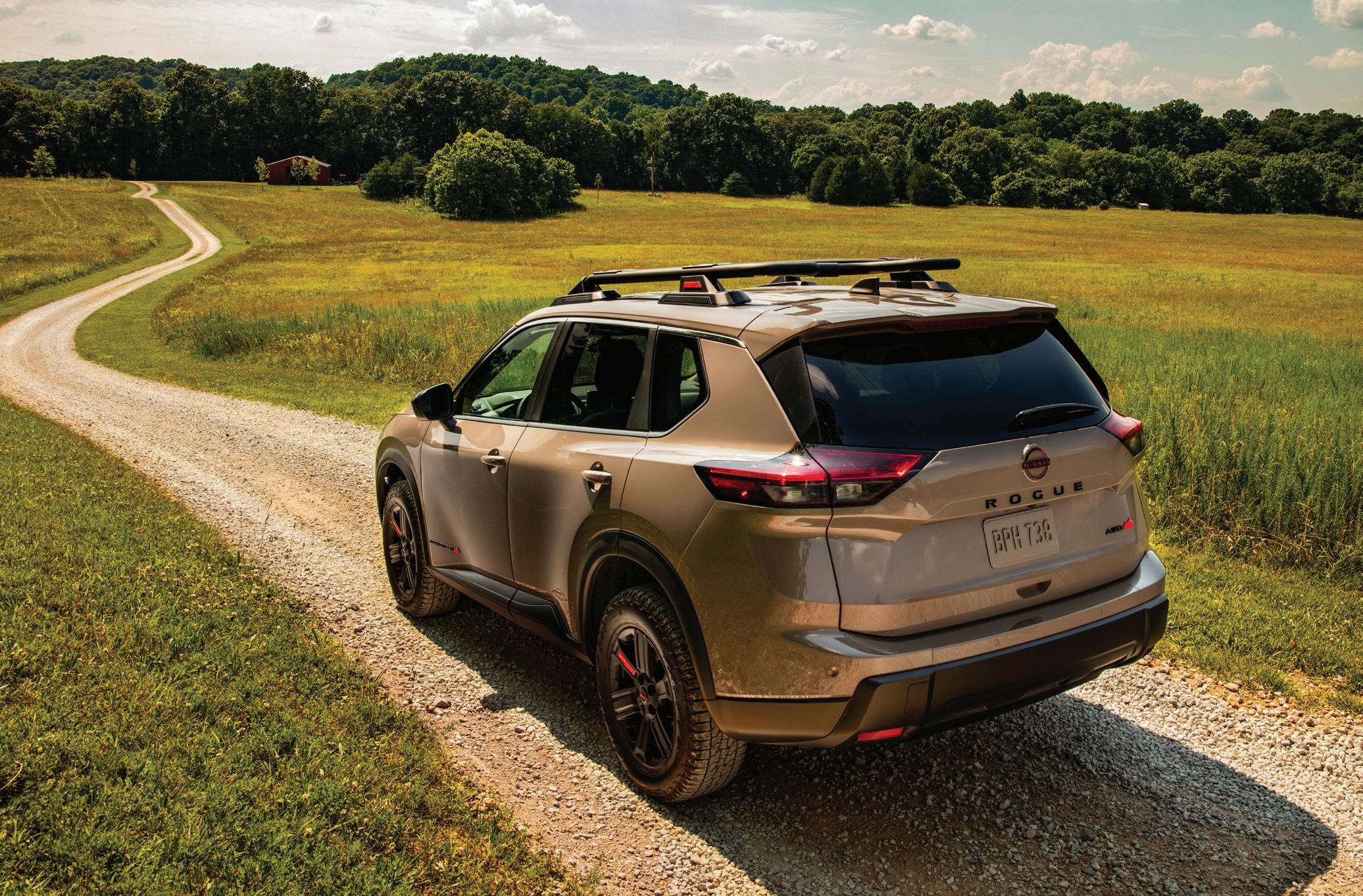
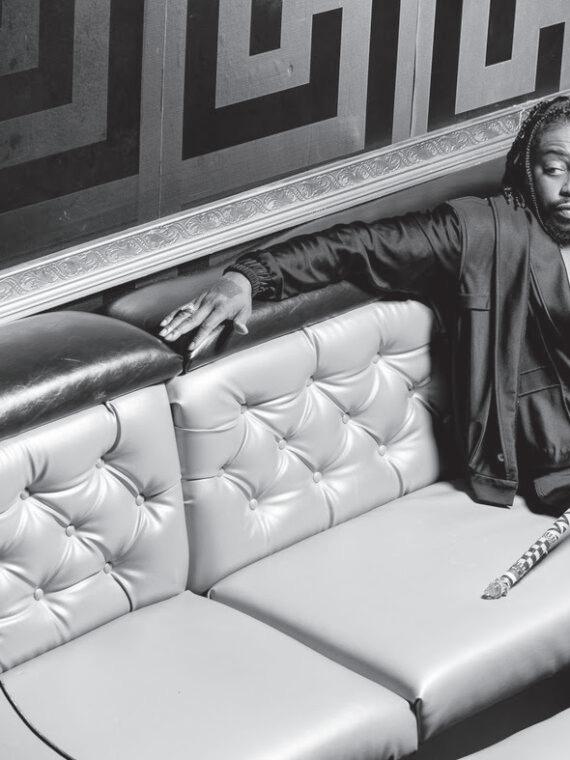
Two decades ago, a fresh voice emerged from the underground, blending vintage soul sensibilities with contemporary R&B style-hanging the sound of love in the process. On June 28, 2005, Raheem DeVaughn released his debut album, The Love Experience, a project that not only announced his arrival but carved out a permanent place for him in the hearts of soul music lovers everywhere.
Now, 20 years later, DeVaughn is celebrating that timeless body of work with the release of The Love Experience: 20th Anniversary Mixtape Edition, a reimagined tribute curated with longtime collaborator DJ Lil Mic. More than a trip down memory lane, the mixtape is a powerful reminder of the album’s impact—and Raheem’s fearless dedication to the art of storytelling through soul.
When The Love Experience dropped in 2005, it was a bold and refreshing entry into a genre. At a time when vulnerability in male R&B was rare, DeVaughn leaned in—with lush instrumentation, poetic lyrics, and a voice that could shift from a whisper to a wail without ever losing its truth.
With standout tracks like “Guess Who Loves You More” and “Believe” to the sensual elegance of “You”,the album tackled love in all its forms—romantic, spiritual, even revolutionary. It was raw, honest, and unapologetically Black.

“I was never afraid to talk about love, pleasure, pain, and protest— all in the same breath,” DeVaughn once said of the project. That’s what made it revolutionary then, and that’s what still makes it relevant now.”
With a Grammy win, five Grammy nominations, multiple charttopping albums, and a deep catalog of socially conscious ballads and bedroom anthems, and hosting the Original Quiet Storm on WHUR 96.3 FM, Raheem DeVaughn has never wavered in his mission to elevate modern soul. Whether crooning over candlelight or calling out injustice, his voice remains one of the most vital in contemporary R&B.
In a music landscape that often forgets its roots, Raheem DeVaughn continues to remind us that soul never goes out of style. The Love Experience may have been released 20 years ago, but its message— and its magic—are as potent as ever.
As the smooth blend of beats, spoken word, and nostalgia rolls out through this anniversary edition, one thing becomes clear: Raheem DeVaughn didn’t just make an album—he made an experience. And we’re still living in it.

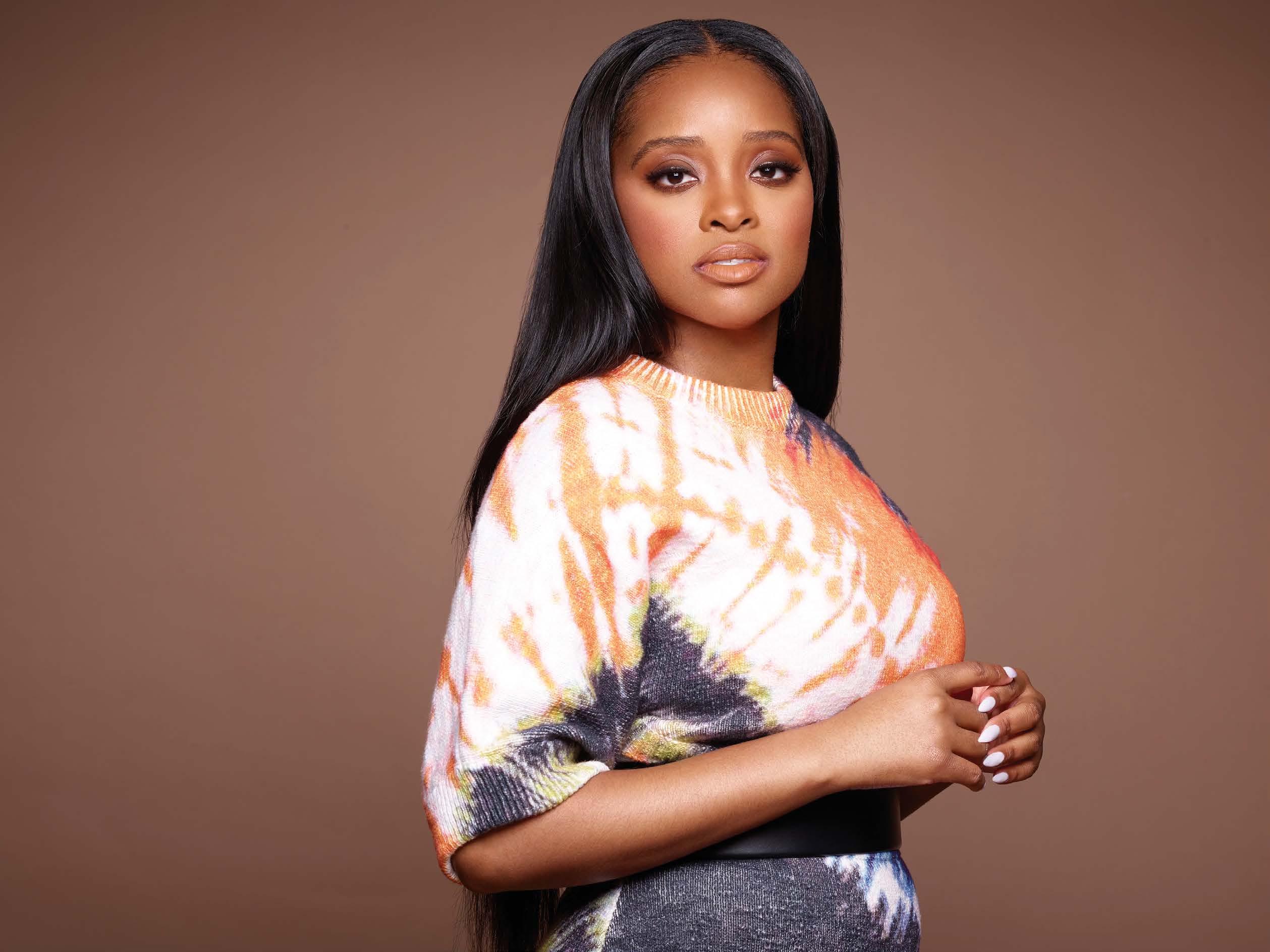
Tamika D. Mallory has never been afraid to speak truth to power. Known as a change agent—not just as a movement leader, but as an author and storyteller—she’s revealing a different kind of truth: her own.
With the release of her gripping memoir, I LIVED TO TELL THE STORY: A Memoir of Love, Legacy, and Resilience, the globally recognized social activist has launched more than just a book tour—it’s a national reckoning wrapped in raw truth, healing, and hope.
Following the critical acclaim of her 2021 bestseller State of Emergency, Mallory’s new memoir digs even deeper. It peels back the layers of her public persona to share the untold stories of pain, perseverance, and purpose that have shaped her into one of the most formidable voices of our generation.
From Harlem to healing, Mallory invites readers into her world with unflinching honesty—detailing her experiences as the daughter of Black civil rights leaders, navigating teen pregnancy, mourning the loss of a loved one to gun violence, enduring sexual assault, and overcoming addiction after prescribed medication led her to rehab. Each chapter is a revelation, offering not only insight but solidarity for those who have faced similar battles behind closed doors.
And now, Mallory is bringing those conversations face to face with the people who need them most.
Across the country, her book tour has ignited deeply personal and transformative conversations. With sold-out appearances and standing ovations, Mallory has connected with thousands of readers ready to engage in the uncomfortable, necessary dialogue her memoir inspires. These aren’t your typical book signings—they’re community healing sessions.
“I’m not just sharing a story. I’m sharing my scars so others know they’re not alone,” Mallory has said on tour.
This August, Mallory will bring her message to one of the summer’s most anticipated cultural events. She’s set to appear at the Martha’s Vineyard Black Book Festival on Saturday, August 9, 2025, at 4 PM, where she’ll participate in a featured conversation about I LIVED TO TELL THE STORY and the personal journey behind the headlines.
Tickets are available at mvbbf.com
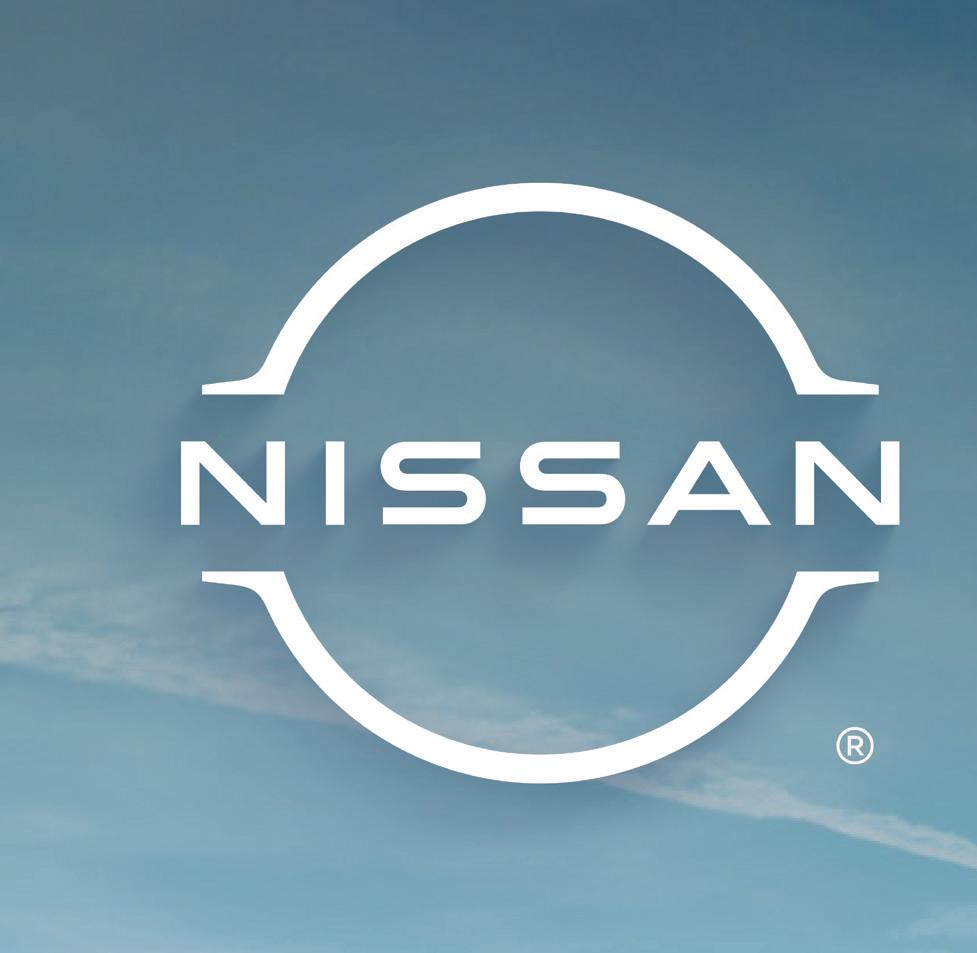

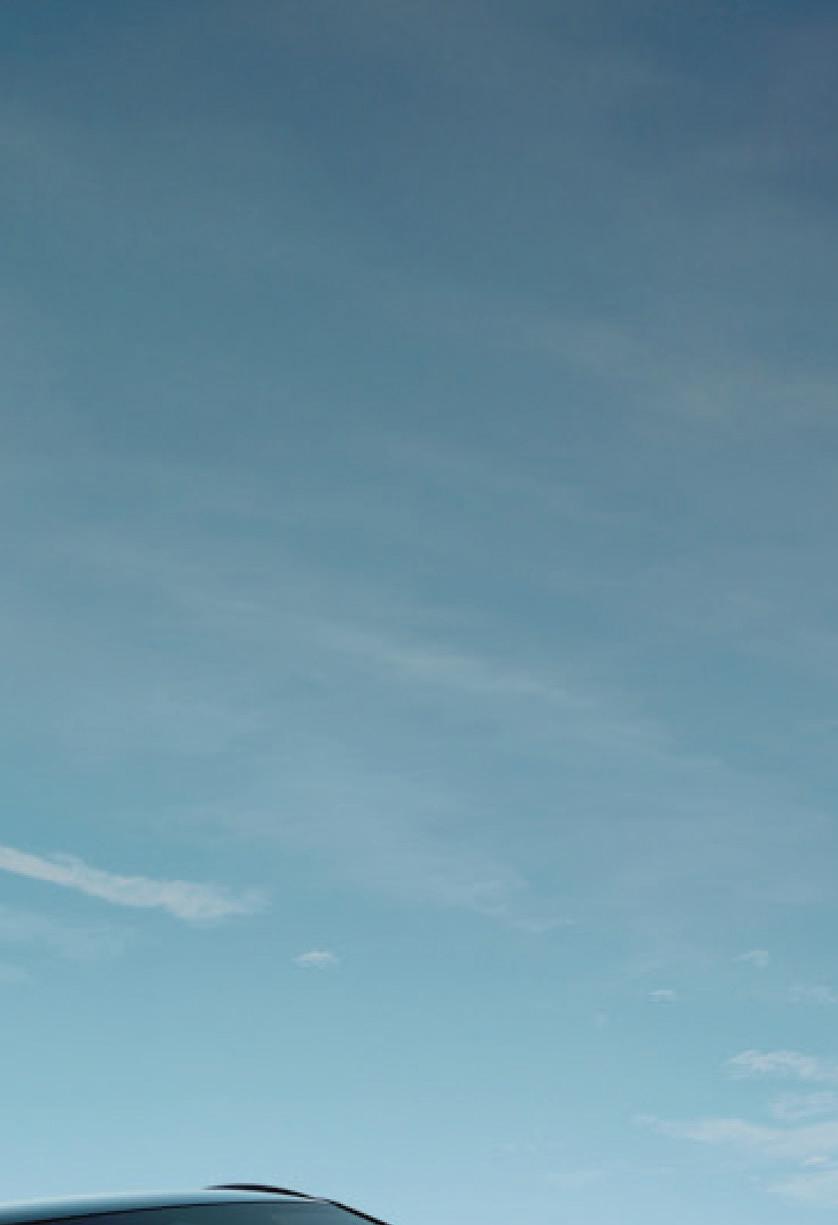

Fully equipped for adventure. Level up your off-road exploration with the 2025 Armada PRO-4X.
BY EVERETT COOPER
From the silver screen to the written page and now to the top shelf, Malcolm D. Lee continues to evolve as one of Hollywood’s most dynamic and multi-faceted creators. Best known for directing and producing The Best Man franchise, Lee has redefined the art of telling authentic Black stories rooted in love, brotherhood, and aspiration. Now, with a debut novel and a luxury bourbon brand to his name, Lee is turning the page to a bold new chapter.
Malcolm D. Lee sat down with UPTOWN Magazine for an intimate and wide-ranging conversation about his ever-evolving journey as a storyteller, entrepreneur, and cultural tastemaker. While The Best Man saga cemented his legacy in Black cinematic history, Lee is now turning the page, quite literally, with the debut of his first novel and the launch of Sable Bourbon, a luxury spirits brand rooted in brotherhood. Though the interview wasn’t conducted on Martha’s Vineyard, the island remains a powerful muse for Lee. A place that reflects the very themes he explores: legacy, community, and elevation. In our conversation, he unpacks what it means to expand creatively and commercially while staying grounded in authenticity.

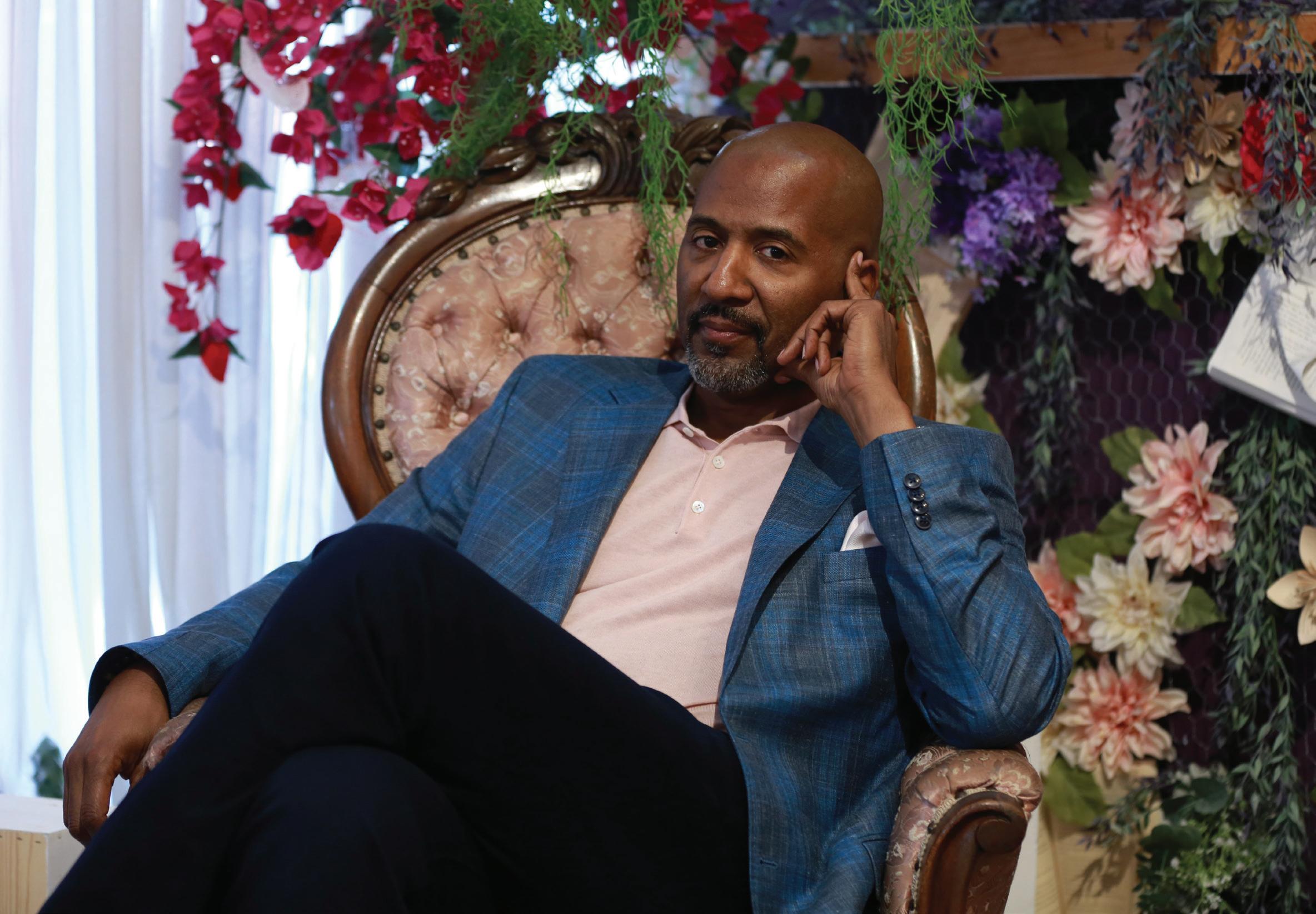
UPTOWN: You’ve worn many hats over the years, director, producer, writer, and now author and spirits entrepreneur. How would you describe this chapter of your journey?
MALCOLM D. LEE: You know, it’s all just a part of an evolution. I wouldn’t say it’s been purposeful; it just unfolded. Each step has felt like the next logical move in my journey as a person, as an adult, and as a creator. Things have happened organically. The Best Man and The Best Man Holiday were deliberate choices—those were strategic. Becoming an author and launching a spirits brand came from that.
UPTOWN: You published your debut novel this summer, The Best Man: Unfinished Business, which is a continuation of your The Best Man franchise, picking up where the Peacock series left off. How did this come about?
LEE: When The Best Man: The Final Chapters ended, I didn’t want to do anything else with The Best Man. I felt like I was finished with the characters, but it was suggested to me by a friend to write books about them. He was really pushing me in an entrepreneurial way— The Best Man books, The Best Man cruises, The Best Man booze. But the books kind of spoke to me because I really have always loved the written word and I consider myself a storyteller.
I had fantasies about sitting on the Vineyard, with a coffee and a muffin, writing on a typewriter like Stephen J. Cannell. So, I gave it a shot. I thought I could do it, and with a writing partner, best-selling novelist Jayne Allen, it became real.
UPTOWN: The Best Man franchise has resonated deeply with audiences over the years. What do you think has made it such an enduring cultural touchstone?
LEE: You know, I get asked this question a lot, and I think it’s because it’s about people that we know. It shows the joy, pain, conflict, and resolution that we experience in life—especially within friendships and relationships. There’s authenticity. And it’s aspirational without being out of reach. That balance is why people have stuck with it. I have met fans of The Best Man over the years, but never in the way that I have during my book tour this summer. The venues were sold out everywhere we went, and I met people in cities all over the country who were deeply touched or entertained by these stories and these characters. That’s the real reward, knowing that something I created has shown who we are, shown our humanity, and allows people to see themselves and people they know.
UPTOWN: Was there anything cathartic or surprising about putting your creative or emotional journey into words?
LEE: No, not really surprising. I think that I put a lot of myself, and I try to put not only humor, but also emotion and pathos and strong characters, and conflict in what I write. When I’m writing, when I’m collaborating with Jayne Allen, when I’m reading it back, when I’m listening to it now, it still resonates. I was listening to the audiobook and there are some very emotional things in there that actually made me tear up for these characters. And it’s not stuff that I’ve gone through, but it’s stuff that I know that people have gone through.
www.uptownmagazine.com 15
UPTOWN: Tell us about your vision for The Best Man trilogy of novels. Book one is The Best Man: Unfinished Business. What should readers expect?
LEE: When I pitched this trilogy of books, the plan was to take each character and dedicate a chapter to them. The first book was going to center around Harper, Robyn, and Jordan, because that’s kind of the love triangle. There’s a lot of open-ended questions, a lot of emotion, a lot of humor that’s gonna come out of these characters. And then book two is going to be Lance, his new bride Jasmine, Candace, and Murch. Then, we would get into Quentin and Shelby and then bring the other characters all together.
But the characters and the story dictate where you go, so we left the readers on a bit of a cliffhanger in book one. Harper, Robyn, and Jordan’s story will continue in the second book and be mixed in with the other characters’. We hope it doesn’t get too unwieldy. I mean, The Best Man: Unfinished Business was close to 500 pages. I guess readers can probably expect around the same length for book two. Maybe less. We’ll see, but now we’ll be dealing with seven characters, as opposed to three.
UPTOWN: You have also entered the Spirits space as an entrepreneur. How did that come about?
LEE: I’m very excited about Sable Bourbon. It was a brainchild of Harold Perrineau, which came out of working with us on The Best Man franchise.
He said, “OK, we, as the characters, drink a lot of brown liquor in the show. Why don’t we make our own?” And we all thought it was
a great idea and a way we could all continue to work together since The Best Man movies ended. So, Harold, Morris Chestnut, Taye Diggs, and I teamed up, and went to Bespoken Spirits, and said, “We want to try this. What do you think?” The great thing was that no one was coming to us asking us to endorse something. We came to them and said, “We want to invest. We want to own.”
Sable is an extension of The Best Man brand, if you will. It’s a representation of the brotherhood I have with these cats who’ve been to my home, and who I’ve been on vacation with, who were at my wedding. So, it’s a natural progression. Brown liquor is a very adult drink, and as I’ve gotten older, I’ve developed more appreciation for brown liquor. I think it’s just necessary also to diversify your business and not put all your eggs in one basket. It’s a tough world out there, and the film and tv industry is a tough business that is ever contracting, not expanding. It’s important for folks to expand, not for vanity’s sake or because it would be cool. Sable is very, very cool, but it’s also, potentially, a good long-term investment.
UPTOWN: Sable Bourbon is described as smooth, bold, and luxurious. How much of that reflects your personal taste and identity?
LEE: I’m very smooth, bold, and luxurious myself. Uh, no. I mean, it was gonna be a bourbon or a whiskey. We tried a number of things— bourbons, whiskeys, rye. But I love the sound of bourbon. I love the word “bourbon”. And I love what Sable ended up tasting like.
What we wanted to get across with the liquor is that it’s all those things. It is aspirational. It is smooth, it doesn’t burn. It’s something that can be shared and sipped and savored. We wanted it to evoke a feeling of camaraderie and brotherhood and friendship.

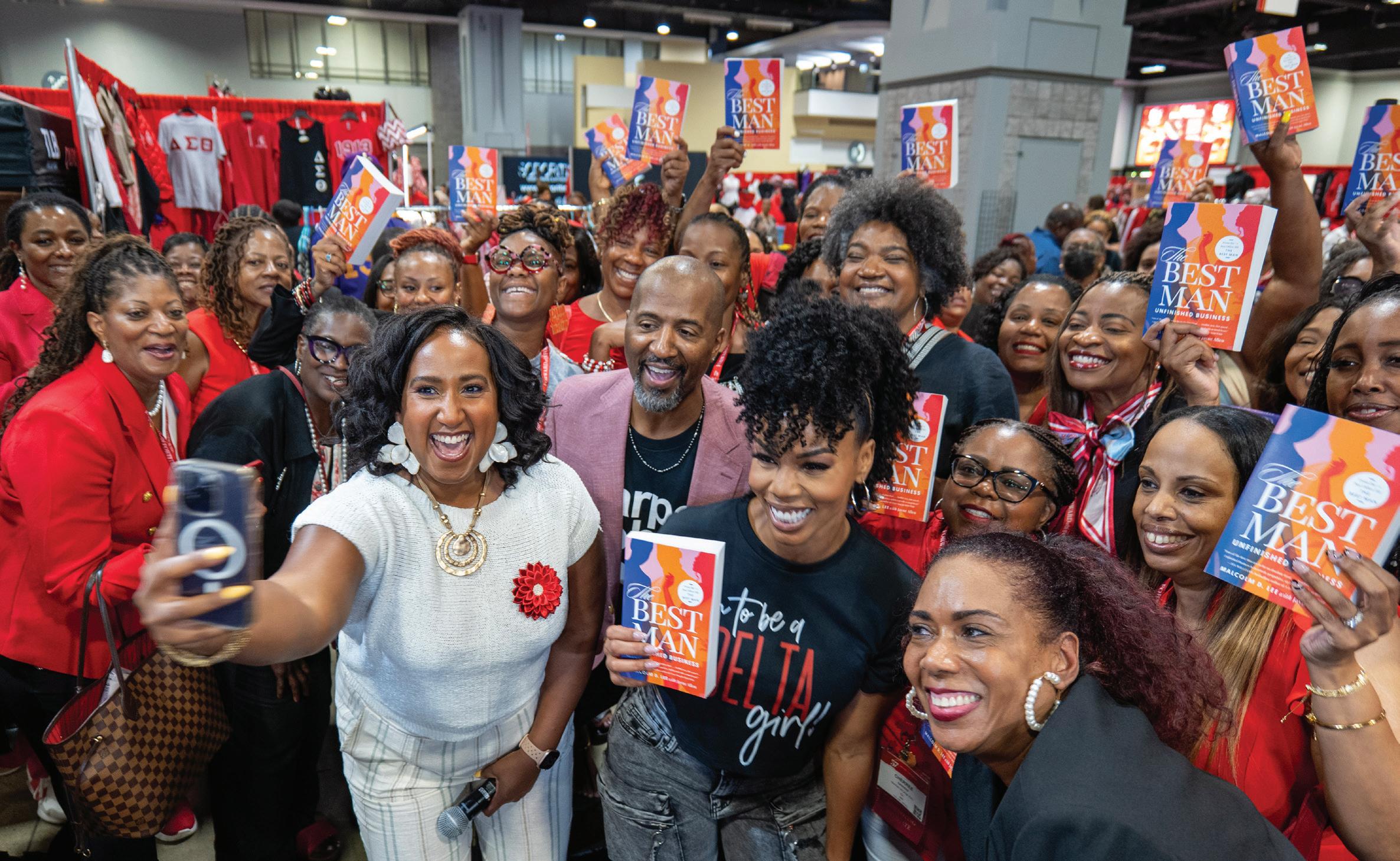
We also wanted it to be accessible, just like The Best Man characters are. There’s an aspirational quality to the characters in The Best Man. But they’re very down-to-earth. They’re very much real people that we know. They’re not so far gone that viewers are like, “Oh, like, I can’t reach these cats, I can’t touch these cats, I can’t relate to them.” So, we wanted the bourbon to have that same feeling.
Sable is a quality beverage that you can make quality cocktails with, and you have quality time with. Also, we wanted it to be classy. Everything from the name of it, to the color, to the font, to the bottle shape, the color of the juice, the taste, the cork, the insignia, the crown, and, you know, the slogan, “Bottled in Brotherhood,” are all part of what we wanted it to sound and feel and experience.
Much of my personal taste and identity is in the bourbon. You know, I’m a Sable guy. I think that we are all Sable guys. It makes sense.
UPTOWN: You’ve said Sable is about celebration and connection. How do you envision it fitting into the lifestyle and culture of places like Martha’s Vineyard and Oak Bluffs?
LEE: Oh, you know, it fits here like a glove. Sable IS Martha’s Vineyard. Black folks having a place to call their own, Black folks having a place to gather and celebrate, and just be is very much part of the whole Sable experience and brand. I can’t think of a better match, to be quite honest with you, when it comes to our spirit brand and Martha’s Vineyard and Oak Bluffs, specifically. I want Sable to be synonymous with Martha’s Vineyard.
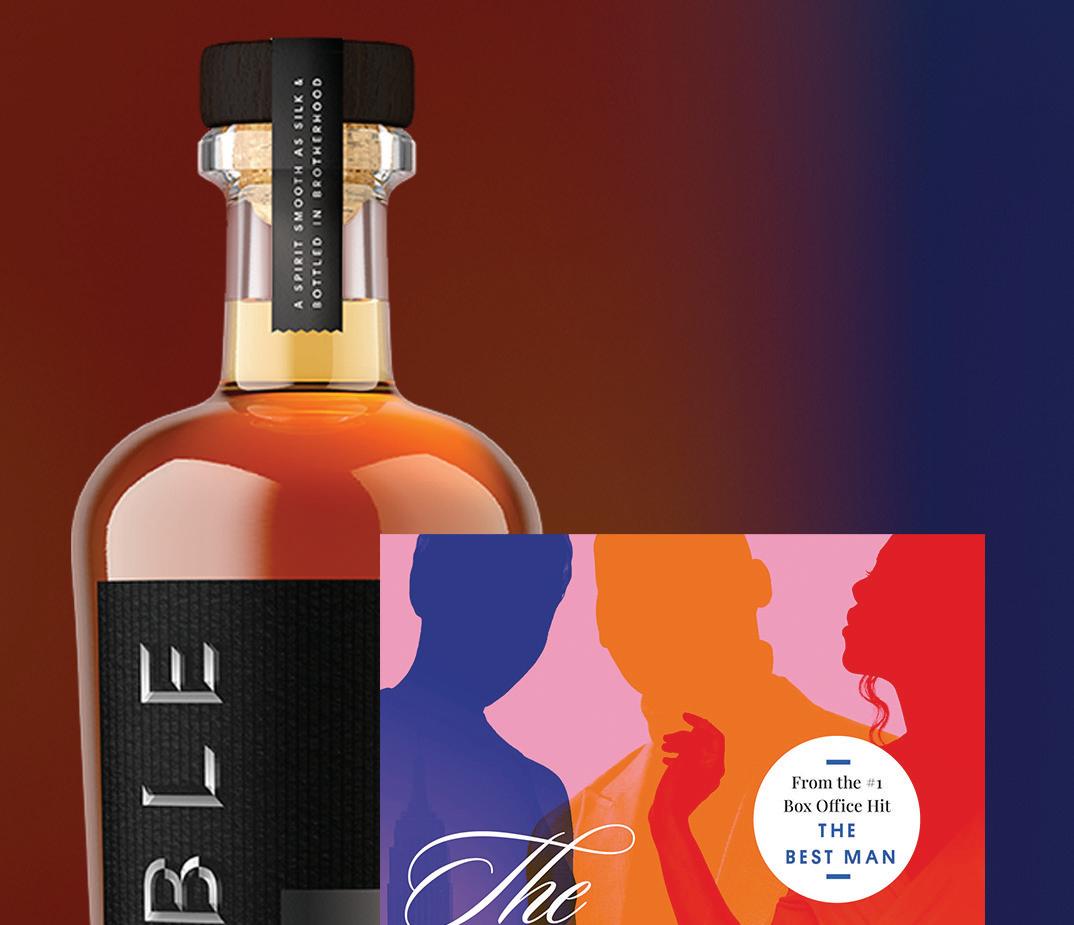

INTRODUCTION BY ANNIKA HARRIS PHOTOGRAPHY BY SYDNEY BAINES
In an age where self-promotion reigns supreme, Amos Arrow has taken a different path—one shrouded in mystery, intent, and pure artistic expression.
Arising star in the New York contemporary art scene, Arrow has cultivated a persona that is as carefully crafted as his art: layered, impactful, and elusive. His refusal to participate in the traditional publicity machine only adds to the intrigue. Collectors must sign non-disclosure agreements just to meet him. Online? Practically a ghost.
But behind the curtain is a visionar y whose work speaks louder than any social media feed.
Arrow’s art is a vibrant, multilayered celebration of culture, joy, and ambition. Drawing influence from Romare Bearden, JeanMichel Basquiat, Peter Tunney, and Rafael Mazzucco, his pieces are alive with storytelling and movement. Collage, paint, and texture come together to form what can only be described as emotional landscapes—each telling a story of the human experience, filtered through the lens of luxury, music, and optimism.
At the heart of Arrow’s work is one guiding principle: big, posi-
tive energy. Many of his commissioned pieces are built around affirmations and mantras chosen by the collector. Each phrase— whether personal or universal—becomes a bold visual statement.
Piano Man lives in the home of Grammy-winner Robert Glasper. Abundance Mentality sits in the collection of financier Felix Olale. NFL legend and television personality Michael Strahan owns Mind the Gap. Each piece radiates with the energy of its owner’s aspirations.
Yet Arrow’s work is not confined to the walls of private homes or elite galleries. He brings his vision to the streets, orchestrating surprise art activations in public spaces. These events, equal parts installation and experience, are designed to interrupt the everyday with a jolt of creativity and joy. To Arrow, art is therapeutic—a vehicle for emotional healing and inspiration.
One of his most evocative pieces, I Grew Up With BIG GOALS, captures Arrow’s mission to merge art, memory, and identity.
A powerful collage honoring historically Black beaches such as Bruce’s Beach, Oak Bluffs, and American Beach, the piece overlays vintage magazine cutouts, cultural icons, and handwritten affirmations. The work speaks to the Black experience of joy, resilience, and ownership in spaces historically denied to them. It’s a manifesto of legacy and leisure, crafted with the same textured emotional language that defines all of Arrow’s work.
In a further act of artistic intention, Arrow utilizes blockchain
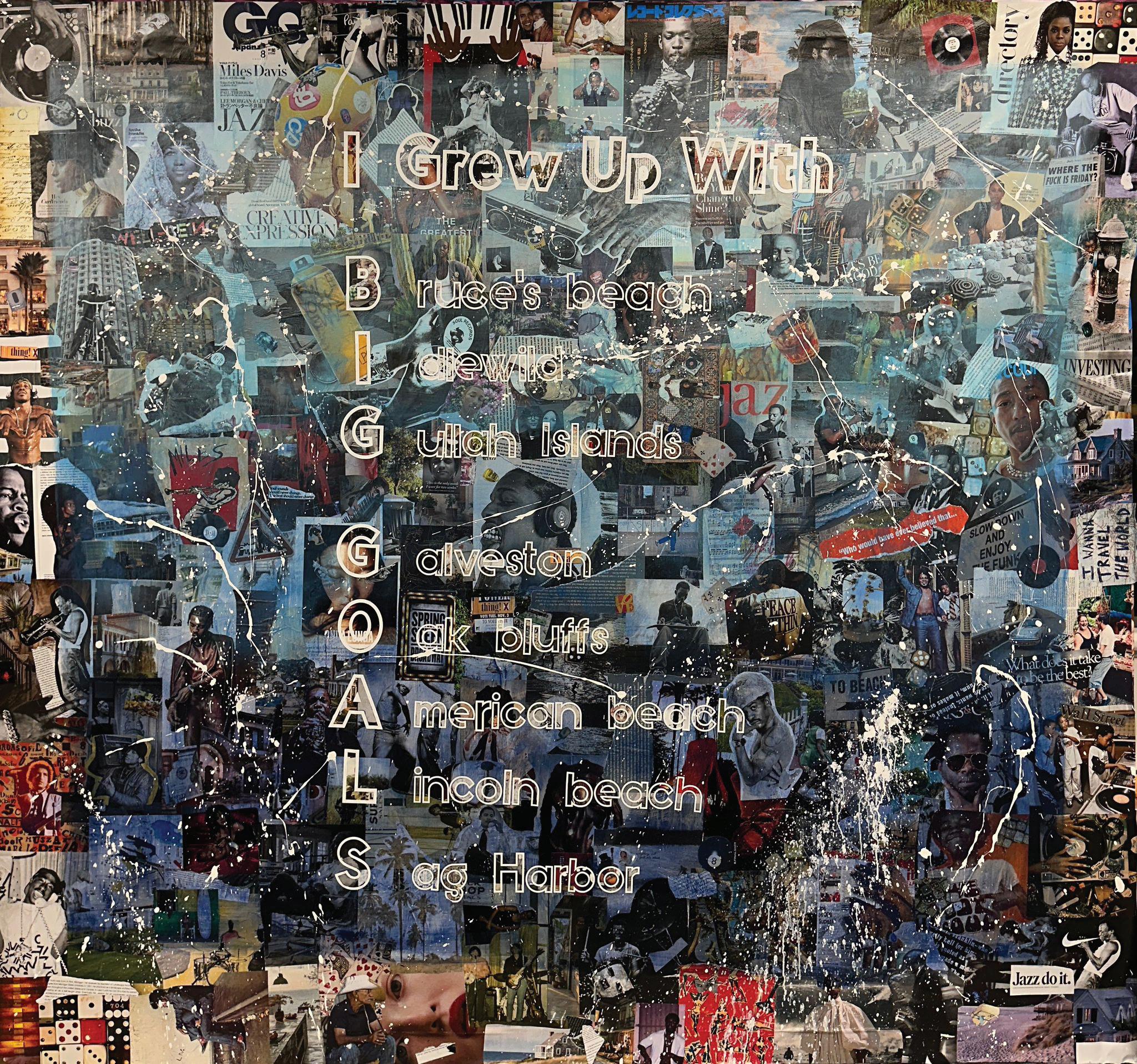
technology to document the provenance of each work, ensuring collectors have secure proof of authenticity. This forward-thinking approach reinforces his desire to protect the integrity of his creations, no matter their size or setting.
Though he shuns the spotlight, Amos Arrow’s influence continues to grow—not through spectacle, but through impact. His art is
more than aesthetic; it is energetic. It heals, uplifts, and affirms. While most artists chase fame, Arrow chases feeling—and in doing so, he has created something rare and unforgettable.
In a world overflowing with noise, Amos Arrow is the quiet storm reshaping what art can be: mysterious, meaningful, and unforgettably magnetic.

Barcelona is a city for falling in love: with a stranger, with your travel companion, with food, Gaudí, wine, art, or simply life itself.
BY AYANA BYRD PHOTOGRAPHY BY STEPHANIE O’CONNOR

It’s a sensory overload of color, languages, and a bohemian-meets-beach-meets-urban scene. And even though the euro continues to be a challenge for the dollar-earning traveler, the city, perched on the Mediterranean in northeastern Spain, is easy on the wallet.
Barcelona grabs you the moment you arrive. A culinary and architectural powerhouse, it’s a city for walking. You will never be able to appreciate it from inside a taxi. Your daily itinerary should include plenty of hours to wander, get lost, and enjoy a strong café, beer, or una clara (a lemonade-beer combo available at any bar).
Start at the top of Las Ramblas at Plaça Catalunya, a major pedestrian thoroughfare that is packed with street performers, mimes, flower vendors, and the occasional birdcage. It is crowded with slow-moving people no matter what time of day, though a little less so in the morning. And since it is filled with tourists, this street ace more secure than in your back pocket, to hold your camera or cell phone tightly, and to wear a messenger-style bag with straps that go across your body, keeping it zipped at all times.)
A must-see on Las Ramblas is La Boqueria (boqueria. info), a huge food market where many Barcelonans do their shopping. You can grab fresh produce, coffee, olive oil, and jams for late-night snacking or to give as gifts back home.
To the west of Las Ramblas is El Raval. This used to be one of the more nefarious parts of town, but it has been gentrified and is teeming with mothers pushing strollers and artists dotting the maze of streets. Visit MACBA, the Museu d’ Art Contemporáni de Barcelona (macba.cat), which is a contemporary art and photography museum. Home to most of the city’s Arab population, El Raval is an excellent place to hear different languages and music and taste spices and foods that you won’t find in the rest of Barcelona. Also, you’ll become an instant fan of the Colombian artist Botero as soon as you see “El Gato






del Raval,” his oversize cat sculpture in the Rambla del Raval square (his “Adam” and “Eve” statues are in the lobby of Manhattan’s Time Warner Center). While in El Raval, stop in the many vintage record stores that offer a collection of classic soul and R&B albums in pristine condition for less than 15 euros.
On the east side of Las Ramblas is Barri Gòtic Because it is right off Las Ramblas, this neighborhood is typically crowded with tourists, but it’s also a hangout for locals. Visit the cathedral, and make sure to stop at one of the many cafés for churros con chocolate.
Barri Gòtic borders El Born, the SoHo of Barcelona, filled with clothing boutiques, specialty shops, and home-design stores. El Born is also home to the Museu Picasso (museupicasso.bcn.es/en), which focuses on works from the artist’s earliest days before he developed his characteristic style. While any guidebook will sing the praises of El Born, many have not caught on to its southernmost tip, La Ribera, an area that is newly bustling with shops and restaurants. Locals like the laid-back, bar-lined square Plaça de Sant Augustí Vell
If you’re wiped out from shopping and eating your way through El Born and can’t make it to the beach (a 20-minute walk), there are two rest options: Parc de la Ciutadella, a flower-strewn expanse popular with joggers and home to the Barcelona Zoo. Or go the more unexpected route and cool down at the Arab Baths (airedebarcelona.com), which is right across from Parc de la Ciutadella. Trust us: It’s not sleazy—it offers Turkish showers, pools, and massages at reasonable prices.
Afterward, head south—until the sea stops you—to the neighborhood of Barceloneta. It’s a workingclass beach hub and boasts some of the city’s best



seafood. Relax and drink in the scene until hunger drives you to one of the chiringuitos (seafood cafébars) dotting the sand. To truly appreciate the architectural work of the great Antoni Gaudí, L’Eixample is the neighborhood to visit. Passeig de Gràcia, the big boulevard that runs through the middle, has a number of buildings that were designed by Gaudí, including numbers 43 and 92, which are open to the public. Plus, big-name stores like Gucci and Burberry are here. Of all Gaudí’s creations and of all the churches that you’ll ever see, Sagrada Família (sagradafamilia.org) may be the most memorable. Incomplete at the time of the artist’s death, it is still under construction, and many of the scenes etched in stone are contemporary, including one featuring Nelson Mandela.
Thanks to Barcelona’s late lifestyle (an early dinner reservation in this city is 10 p.m.), you can get through this packed itinerary without feeling rushed—but that doesn’t mean you won’t be exhausted. No worries: You can sleep when you’re old, or at least when you return home.
Barcelona offers much to explore beyond the city limits.
If you think all parks are alike, make a point to visit Gràcia’s main attraction, Parc Güell. It was designed by Gaudí and looks like an adult Candyland or the set of a Tim Burton film, with colorful tiled animals dotting the multilevel landscape. It’s a tough sell on paper but an essential trip. Drink sangria and people-watch at one of the many cafés scattered throughout the grounds.
Expand your museum-hopping beyond Picasso by visiting the Fundació Joan Miró (fundaciomiro-bcn. org) at the top of Parc de Montjuïc. The view of Barcelona from Montjuïc, located at one of the highest points in the city, is amazing. From the park, you can take the funicular down the hillside and straight onto the beach.
At least 30 minutes: To see beach towns along the Mediterranean, jump on the RENFE commuter train (catch it from Plaça Catalunya). A well-known spot along this route is Sitges, less than 45 minutes south of Barcelona. Another option is to hop on and head north along the Mediterranean, jumping off wherever looks inviting. These beaches are clean, quiet, and picturesque, and there’s always at least one good restaurant nearby.
One hour: Girona is beautiful if you go to the old city, boring if you see only the new part of town. Walk the original halls and the grounds of the massive cathedral. Go to the old lighthouse. Wander the old Jewish neighborhood’s narrow cobblestone streets, and eat traditional Catalan cuisine.
An hour and a half: Visit the “Black Madonna.” The statue of the patron saint stands at the top of Montserrat (“saw-toothed mountain.”) The view from the top is impressive, as is the black face of the virgin. Be sure to wear comfortable shoes: It takes many steps to reach the top.

In the world of artisanal spirits, family bonds often shape the heart of the business. For Alisa Lawrence and Nilaja Young, co-owners of New England Sweetwater Farm and Distillery™ in Winchester, New Hampshire, that bond is both the secret ingredient and driving force behind their growing empire. Together, the sisters have transformed a once small, family-owned distillery into an award-winning brand, earning recognition across the spirits industry for their premium gin, whiskey, and creative infusions.
At the core of their success is more than just an entrepreneurial spirit—it’s a deep-rooted connection to their heritage, their parents’ legacy, and their shared history. “We love the craft and science of what we do,” Alisa and Nilaja say. “We’d like to think that we’re putting our legacy and generational bonds into each bottle. That’s why we’re not going to sacrifice quality or ever compromise.”
From Brooklyn to New England: A Journey of Dreams and Tradition
Alisa and Nilaja’s story began far from the rolling hills of New Hampshire, in Brooklyn, New York. Raised by a Guyanese mother, family gatherings were steeped in Caribbean cuisine and tradition. Yet, their mother’s greatest lesson wasn’t about food—it was about following one’s dreams. Both daughters pursued successful careers in completely different fields. Alisa, initially in healthcare, found her true calling in the music industry, managing recording artists and running a prominent East Coast recording studio. Nilaja, on the other hand, worked in pharmaceutical sales before overseeing a healthcare clinic.
Despite their achievements, the sisters always shared a common vision—a dream to build something together that honored both their legacy and their passion for quality. That dream came to fruition in 2020 when they, along with their husbands, Karl Lawrence and Kenny Young, bought New England Sweetwater from their cousin, Robert Spruill, who had purchased the distillery in 2015 with the intention of passing it on to a family member.
With the help of their late mother’s deposit, Alisa and Nilaja officially took over the distillery in September 2020, diving into the world of spirits with little formal training. A weekend crash course in liquor production marked the beginning of their journey into distilling. With a blend of enthusiasm and determination, they set out to create a brand that combined tradition with innovation.
The Sweetwater Approach: Crafting Spirits with Soul
Once in control, the sisters quickly took on roles that leveraged their unique strengths. Nilaja and Karl focused on mastering the delicate art of distilling, product development, and flavor infusions, while Alisa and Kenny took charge of operations and retail sales. This collaborative approach allowed New England Sweetwater to grow rapidly, resulting in an expanding range of products and an increasing national presence.
Under their leadership, the distillery has earned a reputation for producing premium, handcrafted spirits that celebrate the intersection of craftsmanship and creativity. Their Ashuelot Gin™, Clark & Chesterfield™ American Single Malt Whiskey, and both their Maple and Honey Whiskies have earned top honors at the prestigious San Francisco World Spirits Competition, alongside numerous local and regional awards. The distillery’s Monadnock Apple Pie Moonshine and Maple and Honey Whiskeys have also become customer favorites, while their Rum Punch—a nod to their Caribbean heritage— has become a standout offering.
For Alisa and Nilaja, New England Sweetwater is more than just a business—it’s a tribute to their parents and the legacy they worked so hard to build. Their late mother’s support in helping them purchase the distillery continues to fuel their commitment to producing the finest spirits possible. “Sweetwater means a lot to us because this is something that our parents wanted to see us really run with,” the sisters reflect. “We did, and we’ve built it into something we’re so proud of. We’re not done though. Every time we put liquor in a bottle or print a label, we’re reminded of where we came from and who we are.”
New England Sweetwater Farm and Distillery™ isn’t just about crafting world-class spirits—it’s about creating a lasting legacy, one bottle at a time. And for Alisa and Nilaja, the journey is far from over. With every award, every new product release, and every satisfied customer, they continue to pour their hearts and history into the distillery that’s become their family’s pride and joy.
Their success story isn’t just about business acumen; it’s about family, passion, and a dream realized.

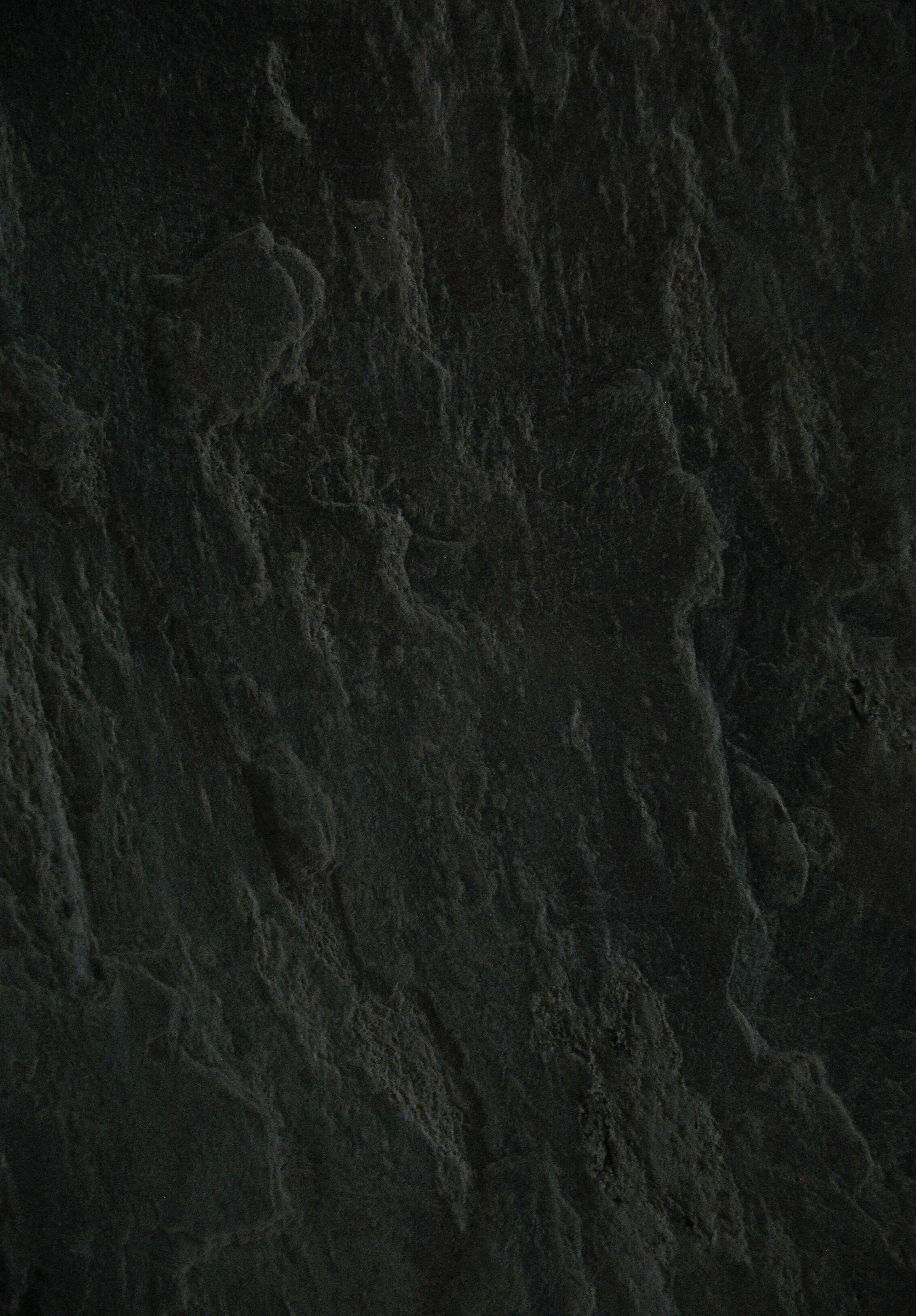
Cedric Nash, “Your Millionaire Mentor’’, is an entrepreneur and investor who educates, inspires and motivates wealth building specifically within the African-American community. Nash is unapologetically committed to the financial wealth building challenges that Black people face and to helping those within his community gain tools and resources that help them grow wealth that they can pass on for generations. An entrepreneur and investor since 1997, Nash founded Oakland Consulting Group, Inc. (OCG), an information technology software consulting firm. Oakland Consulting and its affiliate companies have earned revenues of $90 million annually with over 300 employees nationwide.
Over the past 25+ years alongside running his business, Nash has invested in securities, real estate and private equity, and has developed the expertise of a prudent investor who is excited to share his lessons learned with his community to prevent others from having to learn the hard way. He has been the recipient of the Chamber of Commerce “Entrepreneur of the Year” award, Inc Magazine’s “100 Fastest Growing Inner City Firms”, listed in Inc Magazine’s “500/5000 Fastest Growing Firms in the Nation”, listed as a Black Enterprise Industrial 100 largest black owned businesses, Washington Technology Fast 50, and the recipient of the ITSMF prestigious Beacon Award for entrepreneurs.
Nash’s dedication to educating the Black community in wealth literacy eventually led him to founding the Black Wealth Summit, an annual event that, at its core, works to make wealth building information, tools and techniques more accessible. “It’s more than past time that every Black person has access to the knowledge that can be used to build real generational wealth for their families and communities. The Black Wealth Summit is an answer to making prosperity accessible to Black people, thereby making prosperity accessible to all people,” said Nash. From sessions about banking, securities, real estate investing, starting a business, and estate planning, there is something for everyone looking to learn—including college students just starting their financial journey as well as seasoned and accredited investors looking to invest in more risk-reward type investments such as private equity investing.
This year’s theme at the Black Wealth Summit, “The Season of Accountability”, was crafted to challenge attendees to hold themselves accountable for their own wealth journey and set financial goals that will eventually result in the closing of the
racial wealth gap in our country. The Summit will dive deep into the most pressing topics related to wealth creation for the Black community, from Why Black Wealth Matters to, Why Financial Freedom Matters, to Owning Your Personal Wealth Journey. “Being accountable means being willing to explain your actions with honesty and openness. Each one of us should have a trusted circle that can help us learn from experts, commit to the right decisions and bounce back when we’ve made wrong ones. The Black Wealth Summit is a community where you can rely on guidance and wisdom as you stay the course for your wealth journey.” says Black Wealth Summit Program Architect, Alana Ward Robinson.
As an annual event, the Black Wealth Summit team hopes that returning attendees will continue their educational journey from the year prior, building on the knowledge they gained in subsequent years so that they can take on increasingly more advanced content the Black Wealth Summit has to offer. “By partnering with Black advisors from the world’s largest banks, financials services firms, insurance companies and healthcare providers, the Black Wealth Summit will remain capable of annually delivering the most relevant and innovative content on personal wealth and health,” says Nash.
This year’s lineup includes headline speakers include film and television star Morris Chestnut, Michelle Rice, president of TV One, Seth Carpenter, Global Chief Economist at Morgan Stanley, Governor of Maryland, Wes Moore, as well as over 60 breakout sessions discussing various topics such as obtaining business and mortgage loans, investing in the stock market, investing in cannabis, fintech, multi-family and commercial real estate investment and development, government contracting, student loan management and how to invest in public storage.
The Black Wealth Summit will also host an HBCU Business Case Competition and a Startup Business Pitch Competition sponsored by Motley Fools Ventures. The HBCU Business Case competition is open to all students currently enrolled at a Historically Black College and University. The competition is designed to encourage students to explore entrepreneurship and to begin their own wealth journey and participating teams have the chance to win up to $25K in total prizes.
As a way to further spread his knowledge and experience to make financial education more accessible, Nash has also written
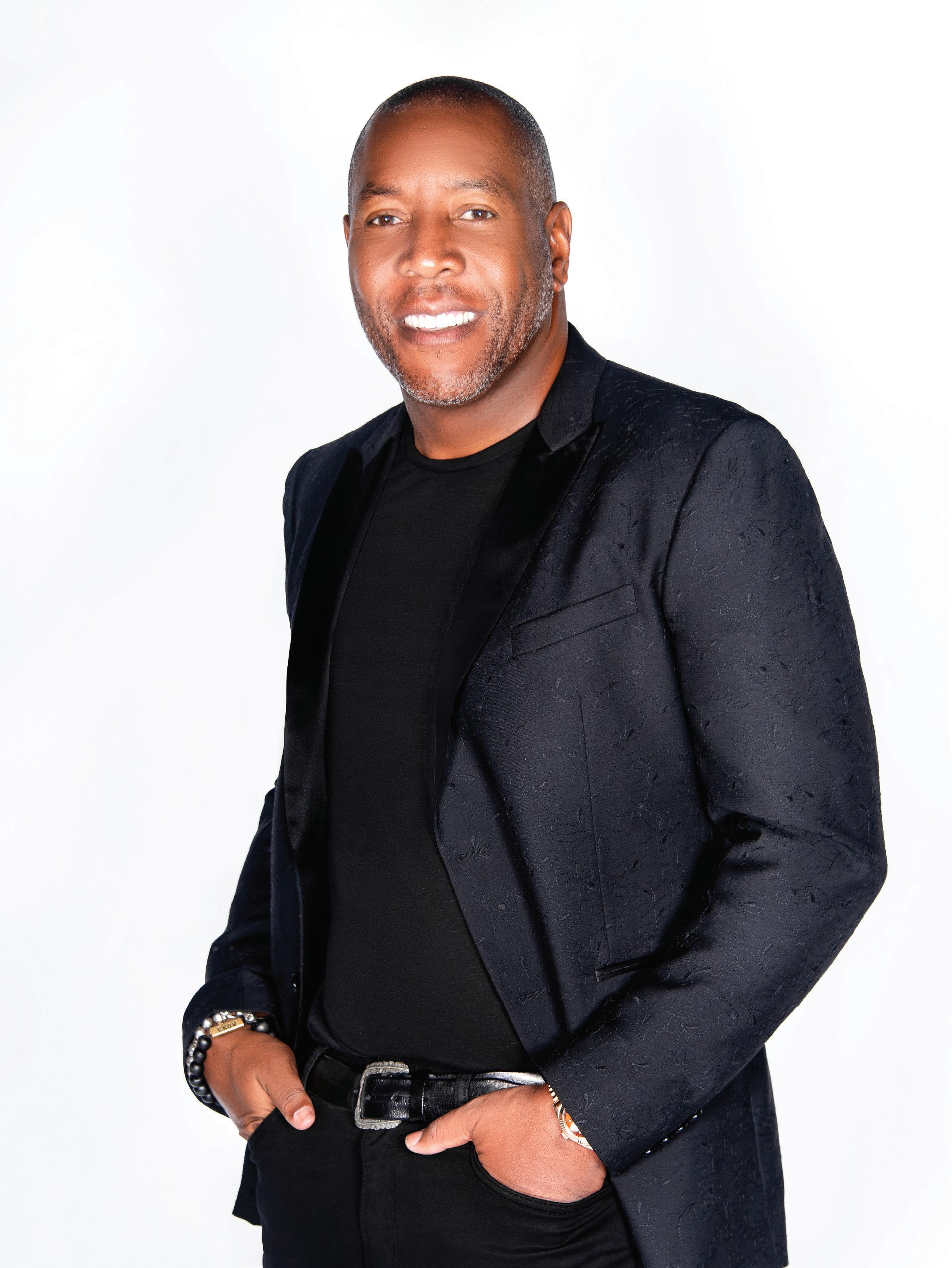
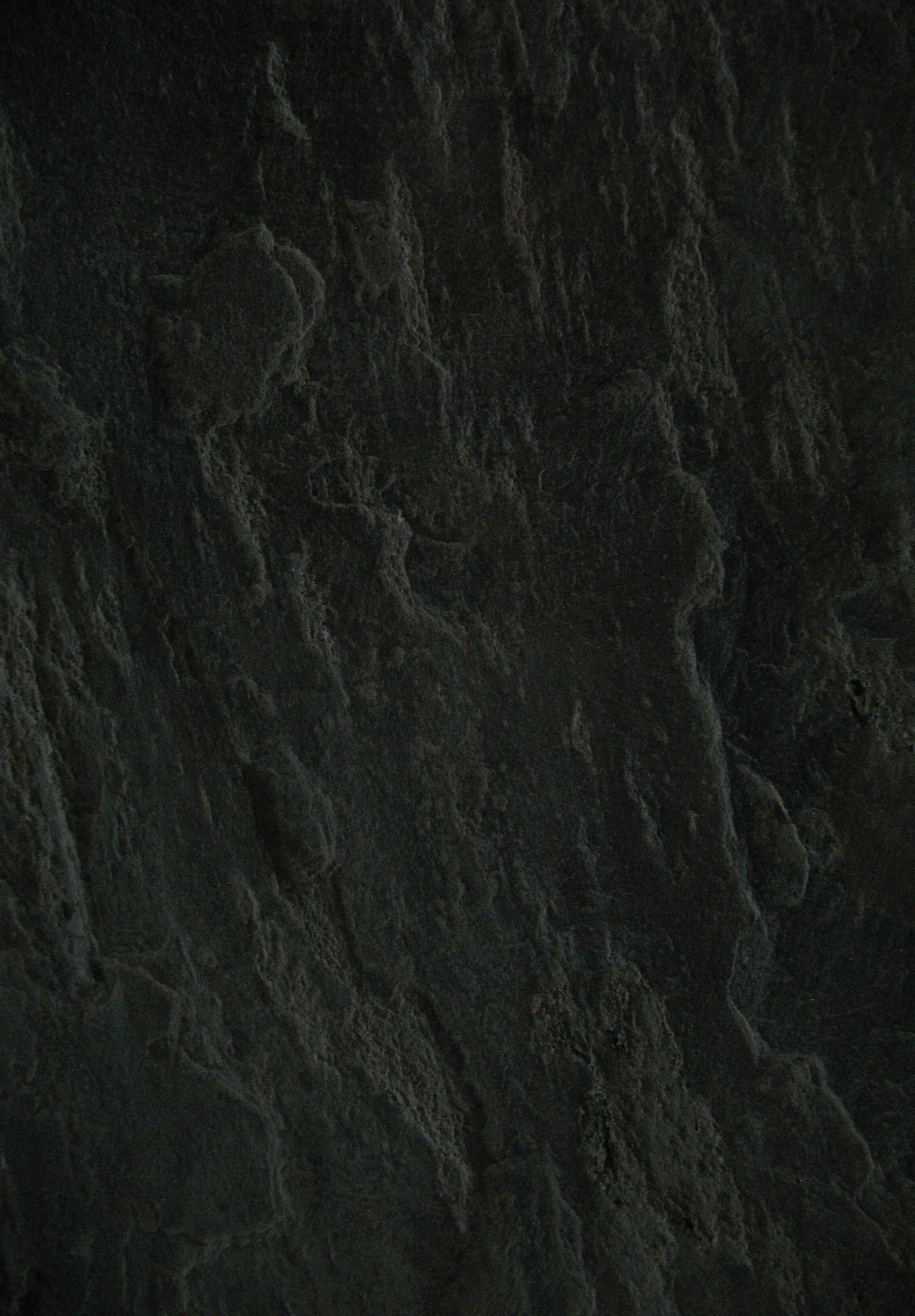
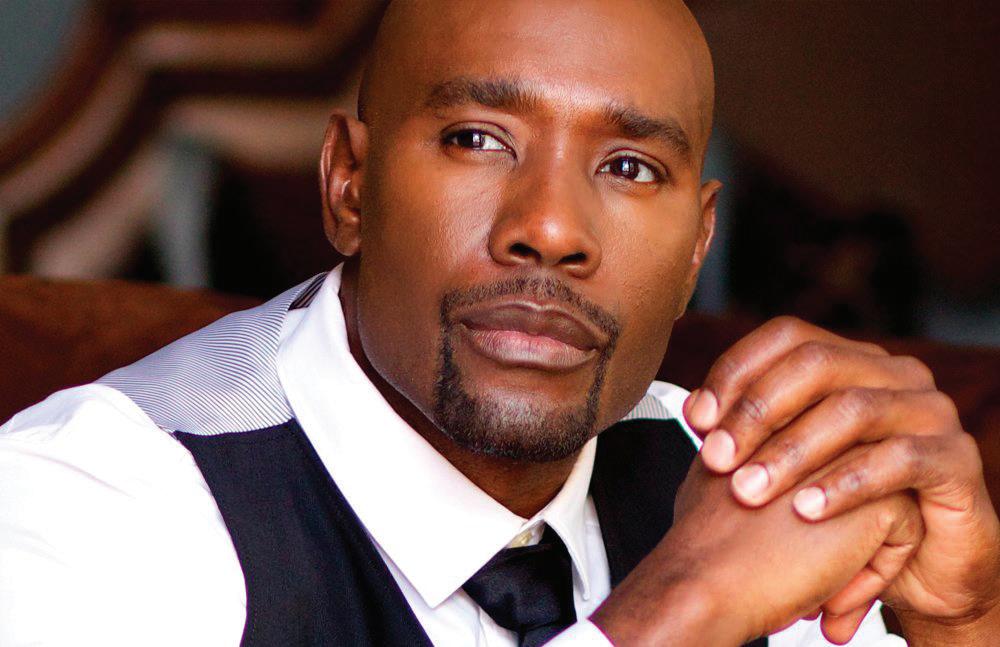

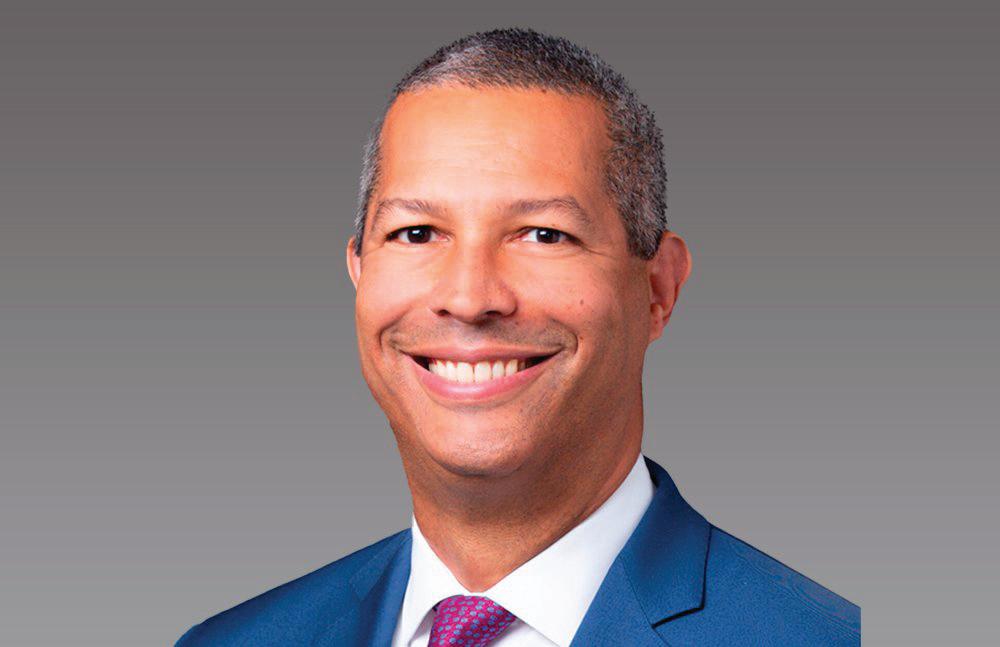

two books: Why Should White Guys Have All the Wealth? How You Can Become a Millionaire Starting from the Bottom and The Millionaire Money Moves Supplemental Investment Guide.
In Why Should White Guys Have All the Wealth? Nash digs into why we might be finding it difficult to do what we need to do consistently with our money to build significant wealth and how to push past the barriers. Nash uses personal stories, humor, and real-world grit throughout the book to teach how to invest in assets that will build wealth for wealth and provide sustainable income for life for yourself and future generations.
The Millionaire Money Moves Supplemental Investment Guide is intended for readers after they’ve finished Why Should White Guys Have All the Wealth?. The guide focuses on how they can leverage the lessons that they just learned to create their own investment portfolio and emphasize the importance of constantly building up capital to either start and run their own business or to expand and amplify their investment portfolio.
Through expanding the Black Wealth Summit every year and planning a series of books for different sub-groups within the Black community, as well as his many other avenues of work, Cedric Nash is committed to making financial literacy education accessible and to helping the Black community build wealth for themselves as well as generations to come.
“I believe our financial situation as a community, and in many cases as individuals, is a result not only of our money values and behaviors but something more. While we must continue to do everything possible to eradicate the impacts of slavery, discrimination and oppression, our overall financial position will continue to lag signficantly if we don’t get busy investing in assets that accumulate and generate income.” says Nash. “Changing what we do with what we have is well within our control and can have an immediate impact on our financial fate, while we continue to fight for equality and for the game to be fair.”

This year’s BWS theme, The Season of Accountability, explores how we can hold ourselves accountable to reach our financial goals and close the racial wealth gap in our country. BWS will dive deep into the most pressing topics related to wealth generation for the black community, from Why Black Wealth Matters (Day 1), to Why Financial Freedom Matters (Day 2), to Owning Your Personal Wealth Journey (Day 3). Returning Black Wealth Summit attendees will share their progress since last year’s Summit and lessons learned along the way.
For more information, please visit www.blackwealthsummit.com and follow on Instagram @blackwealthsummit and Facebook @blackwealthsummit.



